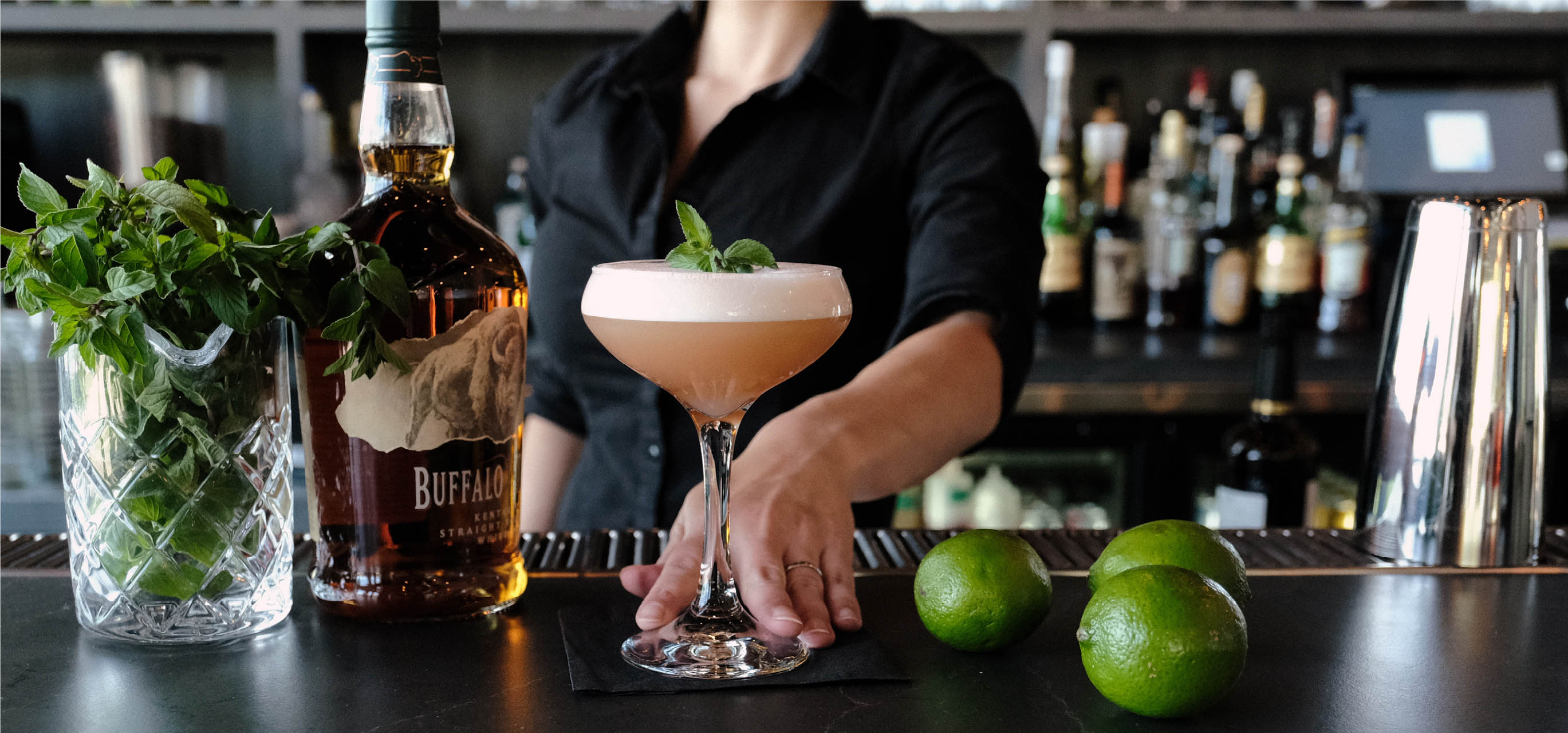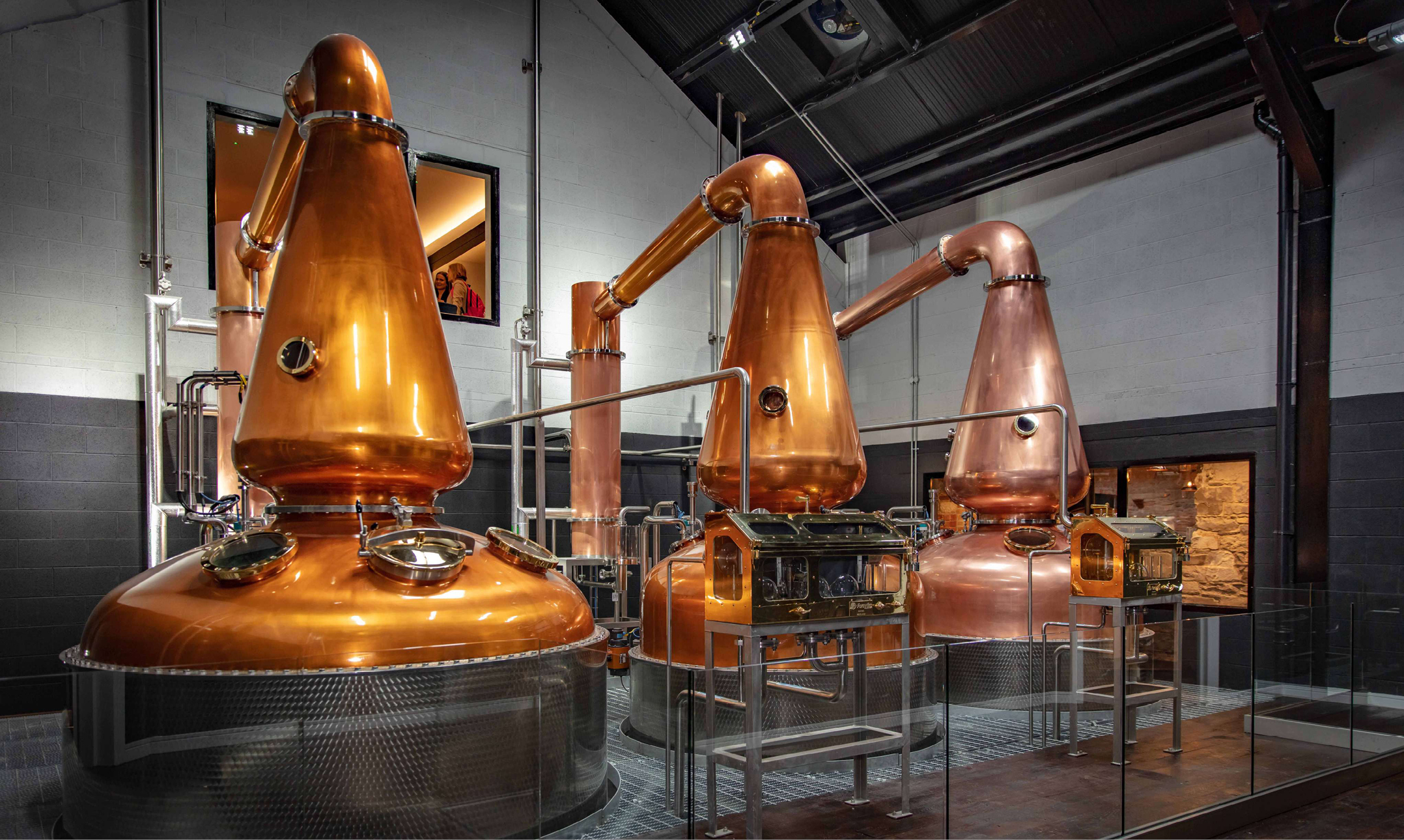Panacea on the Rocks

Eugene Dela Cruz
By Kirk Peterson and Marisa Finetti
The consumption of alcohol has been integral to human society since time immemorial and is deeply ingrained in our cultures in a myriad of ways, from the ritual (weddings and funerals, celebrations and lamentations) to the practical (a source of calories and diversion) to the medical (as both preventative disinfectant and perceived cure). Compelling evidence discovered in recent decades have even led archeologists to theorize that the primary motivation for the shift to agriculture, some 10-15 thousand years ago, was initially for the production of beer, making alcoholic fermentation among humankind’s first technologies. But, does alcohol have any actual medical merit or is it simply a placebo?
It makes sense that over its long history, alcohol has been recommended as a curative for everything from the common cold, flatulence, ear aches, and “to defend the body from corruption” (whatever that means). It was readily available, relatively cheap and easy to produce, and had obviously noticeable effects on the human body. Is it any wonder it didn’t take long for people to exploit its analgesic and disinfectant qualities in addition to its more celebrated mood-altering properties?
For much of history, and perhaps in contrast to today, alcohol was viewed as a genuinely healthful beverage. Ancient people knew well that while you could fall ill from drinking water, the same diseases did not occur with the consumption of fermented beverages. Furthermore, alcohol lessened physical pain, so it stands to reason that if a little bit is good then more is certainly preferable.
Evidence of distillation as a process dates back as far as 3000 BCE and spans across multiple civilizations, although the process was utilized as much in the production of perfume as it was to concentrate alcohol, due to inefficiencies in the vapor collection process. Our first known description of what would be considered the modern distillation of alcohol comes from the 9th century Arab alchemist Al-Kindi, in what is now Iraq. In fact, the word alcohol is derived from the Arabic “al-kohl.” But at the time, distillers were more interested in using their newly refined substance to make everything from make-up to medicine rather than martinis due to ethyl alcohol’s incredible power as a solvent. Many of the more useful chemical compounds derived from natural products are not soluble in water alone and require ethyl alcohol to be effectively utilized; as a consequence, the pigments for painting and clothing became richer in color, perfumes more aromatic, eye make-up was all the more lush…and, as a side effect, magically cured the eye infections of those using it.
Moorish conquests brought this improved distillation technology first to Spain and Sicily, where it then spread throughout the rest of Europe. Alchemists experimented with distilling everything they could, including wine and beer. The resulting concentrated distillate of ethyl alcohol, known as aqua vitae (“water of life”), was the precursor to brandy, whisky, and a host of other liquors and was applied to a number of medicinal uses, including, among other things, as an anesthetic used by surgeon-barbers of the Royal College of Surgeons in Edinburgh. During outbreaks of sickness and plague, doctors of the time prescribed alcoholic beverages, such as brandy, to kill whatever “evil” was inside their patients. Even English philosopher and writer Roger Bacon notably espoused the supposed anti-aging effects of wine, saying it would “preserve the stomach, strengthen the natural heat, help digestion, and cheer the heart.” But he also recognized the dangers of consuming an excessive amount of ethanol: “If it be over-much guzzled, it will on the contrary do a great deal of Harm.”
By the 12th century, physicians at the Schola Medica Salernitana, considered to be the oldest medical school of modern civilization, were experimenting with blending alcohol with a wide variety of herbs, roots, and spices. Today, some of those historical pharmacies still exist, such as Farmacia Massagli, in Lucca in the Tuscany region of Italy, where Dr. Pasquale Massagli popularized a quinine preparation to cure a malaria epidemic that swept through the city in the mid-19th century. Quinine, the bitter, main ingredient in tonic water, is derived from the bark of Cinchona calisaya and was originally introduced from Peru by Jesuit priests. By the late 1800s, quinine quickly became the front-line defense for malaria in Europe and was in such high demand that the Dutch were growing the cinchona tree on the island of Java to provide bark for the monks and pharmacists in Europe, who would use it to make medicinal tonics.
Similarly, one of the factors that popularized Absinthe was its popularity amongst soldiers returning home from military actions in Algeria and India, where the powerful spirit had been given to troops as an anti-malarial or to sterilize unsanitary drinking water. Indeed, the venerable cocktail the Old Fashioned was originally a family of cocktails made in a similar way with different liquors, but always with the addition of cocktail bitters like Angostura. The name of the cocktail itself is thought to derive from the admonition to take your bitters in “the old-fashioned way,” hearkening back to a time when cocktail bitters were developed as part of the patent medicine craze of the 19th century and cocktails were thought of as restoratives and commonly consumed in the morning on the way to work.
Some of these quinine-spiked and herbal liqueurs still exist today and the pungent taste of their botanical extracts, along with their characteristic bitter, medicinal flavors, give them away. Among them is Fernet-Branca, an amaro (Italian for bitter) first produced in Milan in 1845 as an herbal remedy for cholera. The product caught the attention of Father Nappi, who ran the local hospital and claimed it also cured stomach aches and nervous disorders. Fernet-Branca continues to be loved (and occasionally reviled) to this day. Equally popular today is the ubiquitous gin and tonic. Being that quinine - the principal component of tonic – was established as an anti-malarial, Winston Churchill once declared, “The Gin and Tonic has saved more Englishmen’s lives, and minds, than all the doctors in the Empire.” On the seas, the British Royal Navy diluted rum in water and added lime juice to make grog. Besides being morale-boosting, more importantly it was high in Vitamin C. This saved thousands of lives from scurvy, which was a leading cause of death among sailors at the time. Rum Daiquiris carry on this lineage in some form to this day.
The understanding that alcohol had an innate ability to deliver active ingredients led to numerous pharmaceutical products, which is why, to this day, alcohol is not registered as a classified (controlled) drug while the other active ingredients are. Listerine, named after the pioneer of antiseptic surgery Joseph Lister, had a range of uses besides being a mouthwash when it was developed in 1879 as a disinfectant. In addition to its use in surgery and bathing wounds, it was also valuable in curing gonorrhea and even cleaning dirty floors. Much of its original disinfecting qualities for oral hygiene came from the high percentage of alcohol, rather than the active ingredients of essential oils. Yet alcohol is also a drying agent, which can increase bacterial growth leading to halitosis.
Even when prohibition came around many doctors continued to prescribe alcohol. But they were required to regulate how much liquor each patient could receive, which was typically one ounce every few hours. This privilege to prescribe alcohol was one of the few legal exceptions to the 13-year ban on the production, sale and distribution of alcohol.
So does alcohol work to cure illness? It’s not difficult to see how mild inebriation might have the potential to relieve any symptoms, but so far no study has shown that alcohol has the ability to kill germs in the bloodstream or stop a cold in its tracks. However, studies have found that although moderate drinking will not cure colds, it can help keep them at bay. In early 2000, researchers in Spain concluded that drinking 8 to 14 glasses of red wine per week was linked to as much as a 60 percent reduction in the risk of developing a cold. The scientists suspected this had something to do with the antioxidant properties of wine. Red wine, in moderation, has also long been linked as a heart-healthy drink.
Yet the Global Burden of Disease study published in 2018 concluded that no amount of alcohol consumption is safe after analyzing alcohol use and its health effects across 195 countries from 1990 to 2016. The study examined a broad range of risks, including diseases, driving accidents, and propensity for self harm, and determined alcohol consumption to be the leading risk factor for disease worldwide, accounting for almost 10 percent of deaths among those aged 15 to 49, and the leading cause of cancer for those people older than 50.
It seems to be the case that many of the quantifiable health benefits of alcoholic beverages are attributable to the compounds dissolved into and delivered by it rather than the ethyl alcohol itself. Take, for example, those bitter compounds in tonic water, amaro, and cocktail bitters. Recent research into the receptor proteins on our tongue, responsible for what we taste, actually play a crucial role in our body’s immune response. The flavor compounds we perceive as bitter are typically alkaloid in nature, as are the vast majority of plant-based toxins. Scientists theorize our aversion to bitterness is an evolutionary adaptation to avoid poisoning ourselves with our food. Only recently has it been discovered that these taste receptor proteins are not just present on the tongue but throughout the body, including the nose, heart, lungs, intestines, and elsewhere. Upon detecting a bitter compound on the tongue, signals are sent throughout the body and illicit a fascinating set of immune responses to protect the system from microbial invaders. This process seems to form a previously unknown first line of immune defense for our bodies, before what we’ve always thought of as our immune system.
So maybe Roger Bacon was on to something back then. Aren’t we feeling better already?

The Dublin Liberties Distillery.
